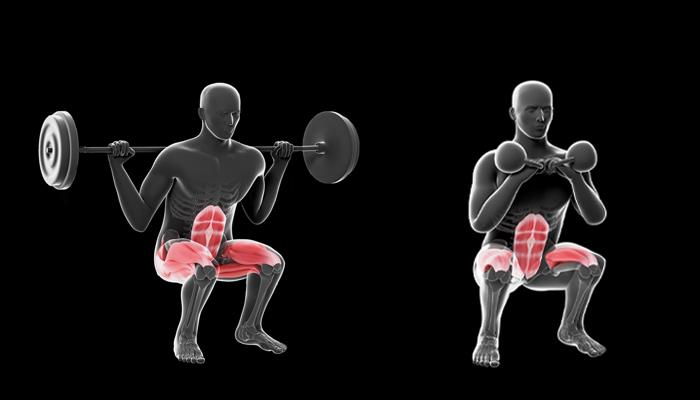courtesy of beachbodyondemand.com
Understanding the Basics
When it comes to building lower-body strength, squats are a go-to exercise with a variety of forms to choose from. Among these, the front squat and back squat stand out for their effectiveness. But what sets them apart, and which one should you incorporate into your workout routine?
Front Squat vs. Back Squat: The Key Differences
The main difference between these two squat variations lies in the placement of the barbell. In a back squat, the barbell rests across the upper back muscles, while in a front squat, it's positioned in front of the shoulders, challenging your posture and core stability more intensely. This distinction affects not just the difficulty level but also the muscle groups that are engaged during the exercise.
Is Front Squat More Challenging?
Many find the front squat to be the more demanding variation. The front-loaded position of the barbell requires a greater effort to maintain posture, putting additional stress on the core and back muscles. The challenge of holding the barbell in a front squat also tests one's flexibility and grip strength, factors that make it a tougher exercise for many.
Comparing Muscle Engagement
While both squat variations work the lower body, they each have their strengths. The front squat primarily targets the upper back and quads, whereas the back squat engages the glutes, hamstrings, and lower back muscles more. This difference in muscle engagement can influence which squat variation you might prefer based on your fitness goals.
Can You Choose One Over the Other?
According to fitness experts, incorporating both front and back squats into a strength routine offers the most benefits. However, for those focusing on general fitness rather than specific sports training, choosing the squat that feels best for your body is key. Whether you lean towards front squats or back squats, the important thing is to include a squat movement in your regimen.
Should Front Squats Be in Your Routine?
Front squats may not be necessary for everyone, especially if you find them uncomfortable. However, they are essential for athletes engaged in sports like CrossFit or Olympic weightlifting. For those looking for an alternative, the goblet squat is a great option that still demands core and back strength but is more accessible in terms of weight and grip requirements.
Mastering the Front Squat
Before adding weight to your squats, perfecting the form with a bodyweight squat is crucial to prevent injury. Starting with a light load and gradually increasing it over time can help you safely incorporate front squats into your workout. Remember to maintain proper posture, keep your core engaged, and ensure your thighs are parallel to the floor at the bottom of the squat.

courtesy of beachbodyondemand.com
Whether you're a seasoned lifter or a fitness enthusiast looking to strengthen your lower body, understanding the nuances between front and back squats can help you make informed decisions about your workout routines. By considering your fitness goals and body type, you can choose the squat variation that best suits your needs.
*** We appreciate our sponsor *** |
| [TAG2]
Image Credit: Stacy Robinson / AuthorsUSA.com |
Did you miss our previous article...
https://naturesmart.us/fitness/unlock-the-power-of-onearm-pushups-your-ultimate-guide
 HealthWellnessFitnessBeautyVideosPrivacy PolicyTerms And Conditions
HealthWellnessFitnessBeautyVideosPrivacy PolicyTerms And Conditions
